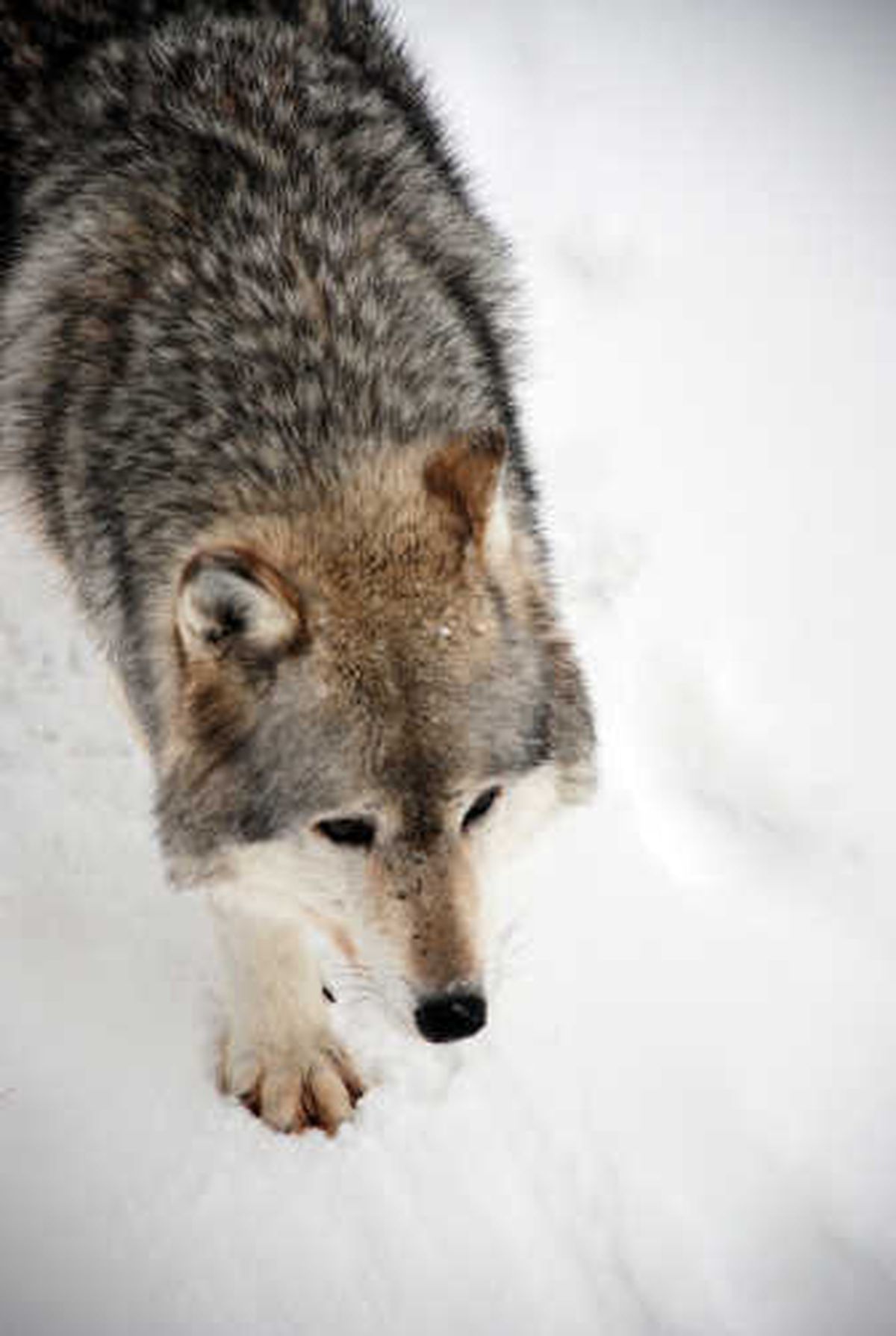Gray wolves de-listed in Idaho, Montana

Interior Secretary Ken Salazar said Friday he is upholding the U.S. Fish and Wildlife Service’s decision to remove gray wolves from the federal endangered list in the Northern Rockies, including in Idaho and parts of Washington, and the western Great Lakes.
Wolves would remain a federally protected species in Wyoming because the state’s law and management plans were not strong enough, he said. But management of the predator will be turned over to state agencies in Montana and Idaho and parts of Washington, Oregon and Utah, in addition to the Great Lakes states of Michigan, Minnesota and Wisconsin.
Gov. Butch Otter told the Idaho Press Club the news about 9 a.m.
Asked by reporters for his reaction, Otter leaned his head back and howled like a wolf.
“I’m grateful for the secretary’s confidence in Idaho’s management plan and I have every confidence that Cal Groen and our Fish & Game Department will justify his confidence by a well-structured management plan which will yield a sustainable population of Canadian grey wolves in Idaho,” Otter said. “This is pretty powerful medicine for us. … This is great news.”
The Obama administration had ordered a review of the decision made by the Bush administration shortly before departing. Salazar said he had concluded that dropping the wolf from the list was justified by its strong comeback in the two regions, which together have a population of nearly 5,600 wolves.
“The recovery of the gray wolf throughout significant portions of its historic range is one of the great success stories of the Endangered Species Act,” he said in a conference call from Washington, D.C.
Wolves elsewhere in the Lower 48 states remain on the endangered list.
Courts have overturned previous attempts to remove the wolf from the list, and future legal battles appear likely.
Environmental groups immediately pledged a lawsuit over the estimated 1,500 wolves in the Northern Rockies. A federal judge in Missoula last year sided with the groups when they filed a lawsuit saying the animal’s long-term survival remained at risk, particularly in Wyoming.
The government in January came back with its plan to leave out Wyoming.
“What we had hoped was the new administration would have taken a deep breath and evaluate the science,” said Jamie Rappaport Clark, vice president of Defenders of Wildlife and a former Fish and Wildlife Service director under President Bill Clinton.
“Whether it’s (Bush Interior Secretary) Kempthorne or Secretary Salazar, the concern remains the same,” she added. “It’s the same plan that I fear doesn’t protect the wolf’s long-term sustainability.”
Wyoming’s attorney general previously said his state probably would challenge the latest plan in court.
The Fish and Wildlife Service has been unable to agree on a protection plan with Wyoming, which had sought a “predator zone” covering almost 90 percent of the state where wolves could be shot on sight.
“The scientists at the Fish and Wildlife Service do not feel the recovery plan is adequate in Wyoming,” Salazar said. He said his department would work with Wyoming to “come up with a joint way forward.”
The northern Rocky Mountain wolf segment, with a combined population of roughly 1,600, includes all of Montana, Idaho and Wyoming, the eastern one-third of Washington and Oregon and a small part of north-central Utah.
Idaho and Montana already have crafted plans for public hunts to keep wolf populations in check. There are no immediate plans for hunts in the western Great Lakes, which has nearly 4,000 wolves.
Reporter Betsy Russell contributed to this report.